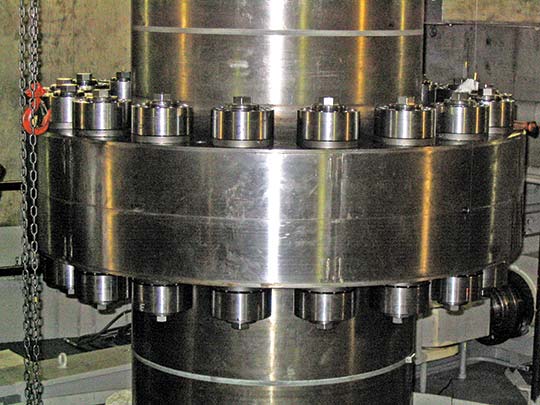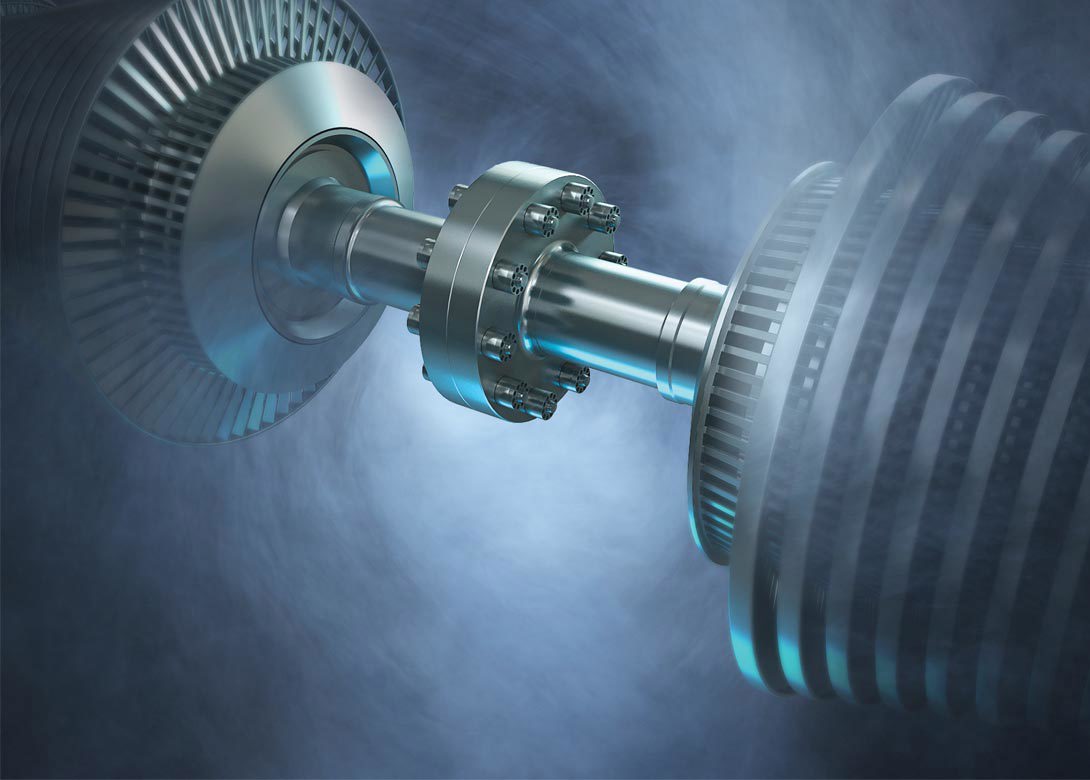Coupling challenges and the evolution
21 November 2016
Couplings can be found in many critical applications and represent one of the most challenging bolted joints to secure. As machines continue to become bigger and more powerful, the demands on couplings also become even greater.
Couplings are as old as industrialisation itself with even early simple machines, such as cotton mills and windmills, needing some way of connecting shafts. However, ever since the invention of the steam turbine back in 1884, shaft couplings have become essential in the power generation and shipping industries. As both turbines and shipping vessels have increased in size, so too has the amount of power and torque that needs to be transmitted. This in turn has greatly increased the demands on shafts and couplings, and in the case of bolted couplings, on the bolts themselves.
“In the power generation and marine industries, couplings have always been there and they really haven’t evolved much,” says Martin Walsh, an engineer with over 30 years of experience working with large-scale bolted couplings. “If you look at a coupling from 60 – 70 years ago, it is pretty much the same design and concept as today. However, the engineering behind them has evolved a lot. Bolts in particular are an area where couplings have become a lot more sophisticated and this has allowed smaller couplings to transmit more torque.”
One of the most important functions of a bolted coupling is to maintain shaft alignment. In marine applications, where shafts typically turn at low speed, any misalignment will cause vibration, which in turn puts unnecessary loading on the bearings. In power generation applications, where rotation can be as high as 3,600rpm, even the slightest vibration or uneven loading is unacceptable and would severely limit the turbine’s ability to run at full power. For this reason, a lot of time and resources are invested in optimising shaft alignment.
“Once you’ve achieved the alignment, the bolts need to hold the shaft as it was set and maintain that alignment in service,” says Walsh. “At some point in the future, you will take those bolts out and disconnect the shaft. When you put it back together, you want it back to exactly where it was before because you’ve already invested a lot in getting the alignment right.”
For many years the most common bolting solution was standard throughbolts, which are relatively cheap and readily available. A bolt is simply inserted through the bore and tightened with nuts on either end to create a friction connection.
But the amount of torque that can be transmitted through friction is severely limited and excessive torque can lead to slippage and misalignment. The resulting micro movements and uneven loading can then lead to damaged bolts and bores. The coupling therefore needs to be rebuilt and shaft alignment re-established.
In theory, fitted bolts, which fill the bore, can offer greater torque capacity, since torque is then driven through direct shear across the cross section of the bolt. In practice it is difficult to achieve a truly fitted bolt, since the bolt’s diameter will reduce as it is tightened. This creates a gap between the bolt and the bore, leading to the same problems of slippage and bolt failure.

This need to establish and maintain shaft alignment, even after a coupling has been dissembled and reassembled again, has led to the increased use of expanding sleeve bolts. Since expanding sleeve bolts expand into the bore, they can ensure a truly fitted bolt and a far more even load distribution. This eliminates movement and slippage, so that shaft alignment should automatically be re-established once the expanding sleeve bolts are reinstalled.

“The expanding sleeve bolt has probably been the biggest single advance in accuracy over the past 30 years,” says Steve Brown, global product manager – Expansion bolts, Nord-Lock. “They offer many pros and little in the way of cons – ease of installation, accuracy of fit, ease of removal, regaining of alignment and with correctly prepared holes, regaining of concentricity and reusability.”
A key factor driving the development of bolted couplings has been the evolution in engineering analysis. “70 – 80 years ago, couplings and bolts were over-engineered and bigger than they needed to be, as engineers erred on the side of caution,” says Walsh. “It was a situation that existed in many industries because the ability to do sophisticated calculations and simulations was not available.”
Now many OEMs have the ability to test the impacts of temperature, different materials, and operation conditions using computer modelling and simulations. Due to the complexity of rotating couplings, the finite element method (FEM) is becoming increasingly common for identifying weak points and torque tolerance of specific installations. Shear tests have also been used successfully to demonstrate the physical limitations of different bolting solutions.
“There is still scope for further analysis and it would be helpful to see exactly how the newer design of bolts with expanding sleeves compare to the older bolts when it comes to transmitting higher torque,” adds Walsh. “Having a full FE analysis could be a significant advantage since it shows the potential for reducing the number of bolts and size of the coupling, particularly in industries such as wind turbines, where they tend to avoid bolted couplings due to space restrictions.”
The need to design smarter and smaller couplings will continue to be important as turbines and shipping vessels keep on growing in size and output, and need to transmit even more torque.
Reprinted from Nord-Lock Group's Bolted Magazine
www.nord-lock.com
Launching the Nord-Lock Group logotype
The Nord-Lock Group has been evolving rapidly over the past years. Recent acquisitions have added new technologies to the Group’s offering, further enhancing Nord-Lock’s ability to meet the needs of the industry.
The extensive product portfolio now includes Nord-Lock wedge-locking technology, Superbolt® multi-jackbolt tensioners, Superbolt Expansion bolts, Boltight™ hydraulic tensioning system and Expander® pivot technology.
“We are developing into a multi-technology organisation and we now feel that the Group deserves its own identity,” says Ola Ringdahl, CEO of the Nord-Lock Group. “Nord-Lock’s branding has been undergoing changes in the past few months and the company is now proud to introduce the new Group logotype (pictured right) as a natural next step in this development.”
“The new logotype shows our customers they are dealing with one company, no matter what bolting challenges they are facing and which technologies in our product portfolio best suit their needs,” adds Ola Ringdahl.
With specialist knowledge in the field of bolting and four strong product divisions that include Nord-Lock, Superbolt, Boltight and Expander, the Nord-Lock Group is on a mission to create a safer world.



